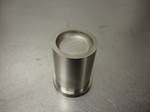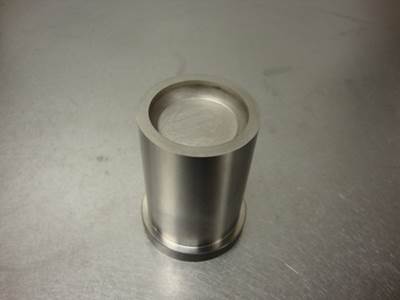Mold Polishing Checklist
Polishing is an orchestrated series of carefully applied skills. To ensure that the job is done right, consider these suggestions.
Polishing is a profession that must be learned and practiced in order to achieve the desired results in the shortest time possible. Polishing is not “rubbing on the surface with a box of rocks.” It is an orchestrated series of carefully applied skills that results in a polished surface. With today’s tight tolerances, quality mold polishing is critical to an injection mold’s success. To help ensure that a job is done quickly and correctly, consider this checklist:
- Use a marker to shade all shutoffs, and corners and edges that need to remain sharp, or corners that need radii added prior to polishing.
- Clearly identify areas that will be textured, as well as the depth and type of texture that will be applied. This will determine the level of polish required.
- Identify the mold steel type and hardness.
- Determine if the vent runners will be lapped and polished, and if enough stock was left for this to be performed.
- Check that all shutoffs are finished and all fitting is complete.
- Mask (tape) any critical areas and details for extra protection.
- Determine the required level of surface finish. Many of today’s engineered plastics will release more easily (or grip more readily) if the plastic injection mold is polished to a specific finish, especially in ribs and on non-draft walls.
- Consider the machining performed on the mold. For example, if it was finished on a CNC machine with a carbide cutter after heat treating, the insert or block may need to be stress-relieved to achieve a high-level diamond polish; or, with a surface that has been cut by EDM and needs to be textured, the polisher must perform an acid test to verify that a consistent surface has been achieved.
- Pre-plan the polishing of each insert in an injection mold. For example, to guarantee a sharp corner, stock may be left behind intentionally after machining to protect an edge from being accidentally rolled; or, in the case of large, complex molds, the side of the mold that requires the most assembly can be polished first to save time.
- Be wary of polishing that is not done by a skilled professional. For example, a mold detail may be initially polished by a well-intentioned moldmaker to a 320-stone finish. This will require the polisher to re-polish areas that were overlooked, because a 320-stone finish can hide a variety of polishing mistakes that will only become evident after the polisher starts to apply a finer finish. The polisher may have to go back to a 220 stone to blend in the mistakes.
- Itemize all parts and inserts that are sent to the polisher, as items can get lost.
- Ensure that all orders and information are in writing. Do not rely on verbal instructions.
- Verify that the cavities, cores and components to be polished are blown out and clean before they are taken to the polisher. No one wants to receive dirty work.
Final tip: Always contact your polisher at the beginning of a project, as he or she can make very helpful recommendations that can reduce polishing time and save money.
UltraPolishing, Inc.
Related Content
Laser Welding Versus Micro Welding
The latest battle in finely detailed restoration/repair of mold materials.
Read MoreHow to Use Thermal Management to Improve Mold Cooling
A review of common mold cooling issues and possible solutions, including 3D printing applications.
Read MoreThe Ins and Outs of Hot Runner Temperature Control
A training checklist that explains the why and how of proper hot runner temperature control and system management.
Read MoreRead Next
How to Hire the Right Mold Polisher
When it comes to mold polishing, every step is crucial.
Read MoreHow to Use Continuing Education to Remain Competitive in Moldmaking
Continued training helps moldmakers make tooling decisions and properly use the latest cutting tool to efficiently machine high-quality molds.
Read MoreHow to Use Strategic Planning Tools, Data to Manage the Human Side of Business
Q&A with Marion Wells, MMT EAB member and founder of Human Asset Management.
Read More




_300x250 3.png;maxWidth=300;quality=90)




.jpg;maxWidth=300;quality=90)












